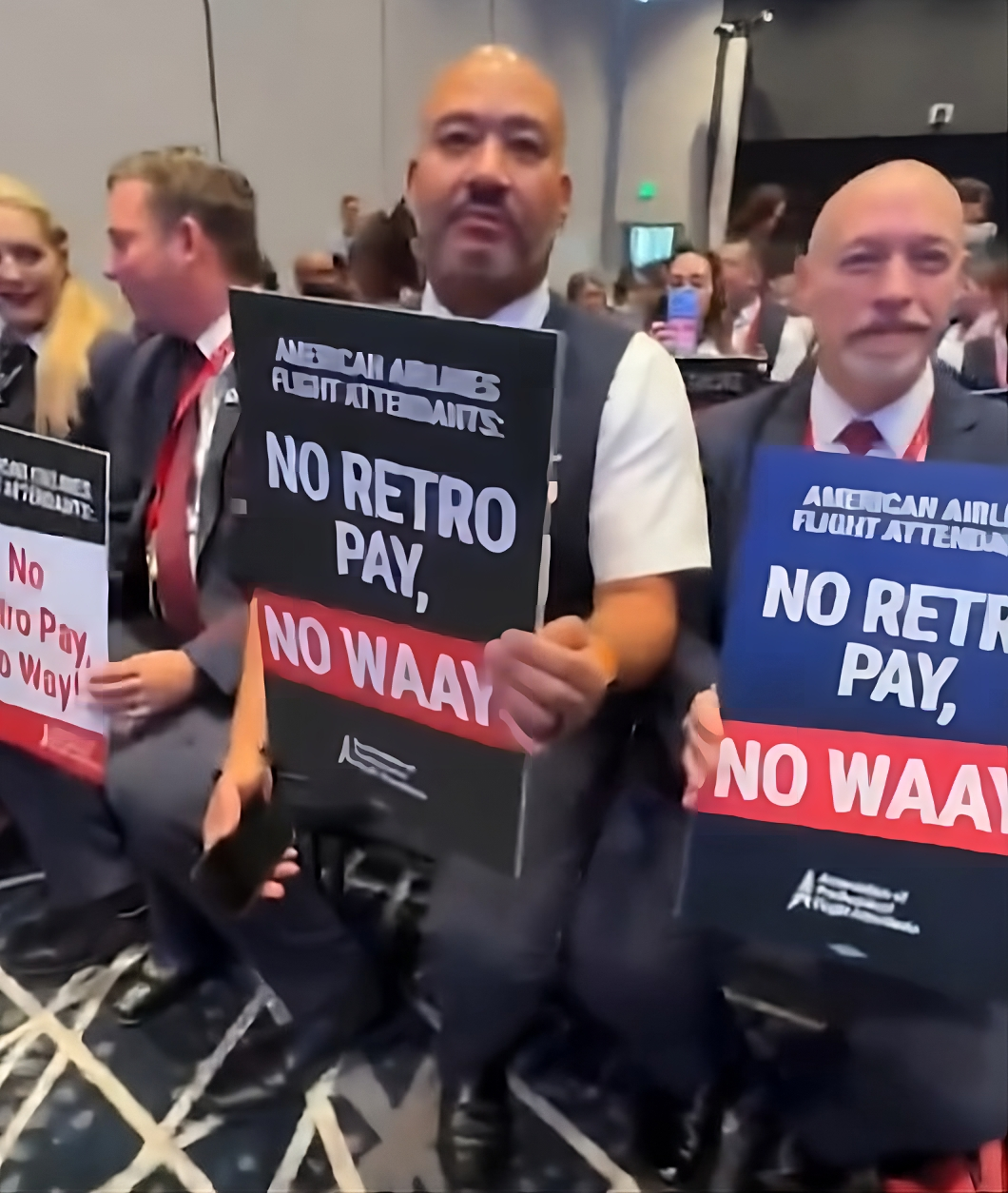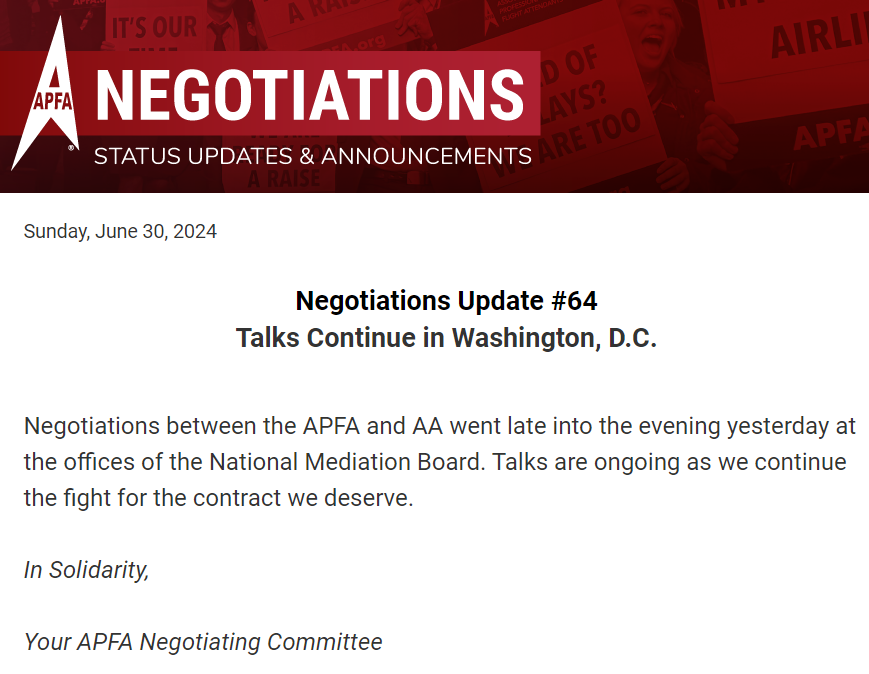High risk in Washington: American Airlines avoids strike after rare weekend meeting

High risk in Washington: American Airlines avoids strike after rare weekend meeting
American Airlines and its flight attendants union were called by the National Mediation Board to a rare meeting in Washington DC on Saturday.
After negotiations this month failed to produce a collective agreement acceptable to both parties, the union told flight attendants to prepare for a strike. The mediation committee had not scheduled any further collective bargaining. The union said the negotiations that had already taken place were a last-ditch effort. They believed they would be given a 30-day cooling-off period and then be allowed to strike.
There was a lot of speculation that this would happen on Saturday. I have given the reasons why I think this is unlikely. The mediation agency did not inform the parties about their release into the “self-help” position.
Instead, the Association of Professional Flight Attendants informed its members that The negotiations will continue.

American has already increased its financial offer during the negotiations. This alone gives the mediation panel the basis to claim that there has been no impasse.
Airline strikes are rare in the United States. There have been two in the last 20 years – Northwest mechanics in 2005 and Spirit Airlines flight attendants in 2010. They damage the economy and the president’s popularity, as he can order a delay in the strike. President Clinton prevented both American Airlines pilots and flight attendants from striking during his term in office.
The National Mediation Board is politically appointed, with the current majority chosen by the president. Allowing a strike would put the president in an untenable position, as he would have to choose between his workforce and average voters in states like Pennsylvania, North Carolina and Arizona, where American has major hubs. Airfares would skyrocket during the strike, eliminating a significant amount of U.S. air travel capacity.

It’s taking too long to reach an agreement – it’s the fault of both parties and circumstances beyond anyone’s control. Now we’re much more likely to reach an agreement without a strike.
- While the mediation body’s move to expand negotiations increases the likelihood of a negotiated settlement, it may reduce the bargaining power of flight attendants.
- The flight attendants’ union – which has significantly scaled back its demands – now has to deal with the weakest of the major airlines and must go after the most lucrative contract first. That’s a big challenge. The chances of flight attendants achieving incremental better results are much greater than at Delta.
- It is taking an agonizingly long time to reach an agreement. The last pay increase for flight attendants was on January 1, 2019, and inflation has significantly eroded the value of their salaries since then.
- A contract was initially delayed by the pandemic. The union probably would not have wanted to negotiate the terms at the time (the deal it would have gotten would not have been a good one).
- The union leadership began negotiations with a position that was far outside the realm of possible agreement and then had to wait until the union officials were re-elected to back down from that position.
- Given the time that has passed, American Airlines’ offer to pay flight attendants more as a stopgap measure while negotiations are ongoing would have been much better. Accepting that deal would not have limited the union’s ability to strike, and the mediation committee does not appear to be allowing them to do so anyway.
Of course, even if the flight attendants’ union does reach an agreement with American Airlines, we will have to wait and see whether it can sell it to its members – after years of making promises about what it would accomplish that likely go far beyond any actual agreement.



